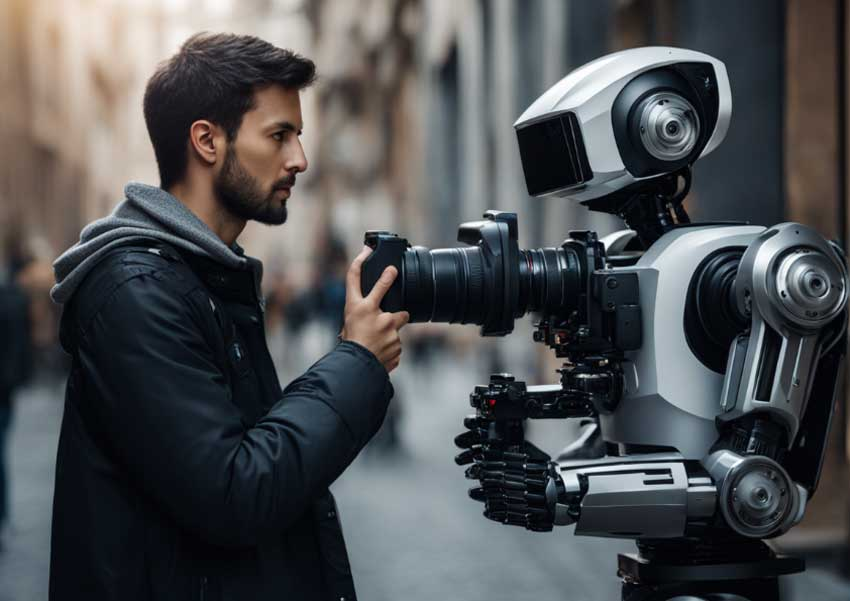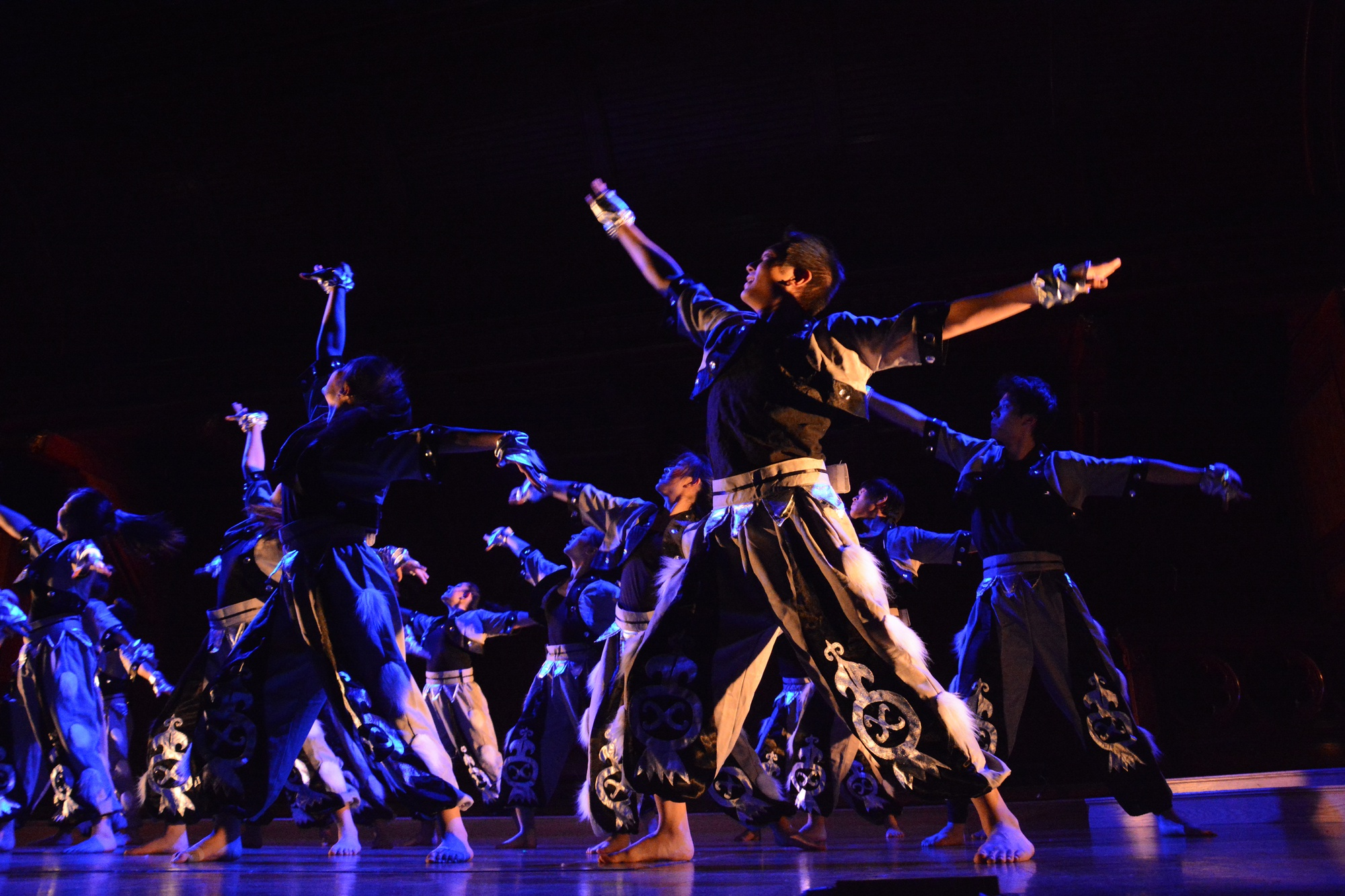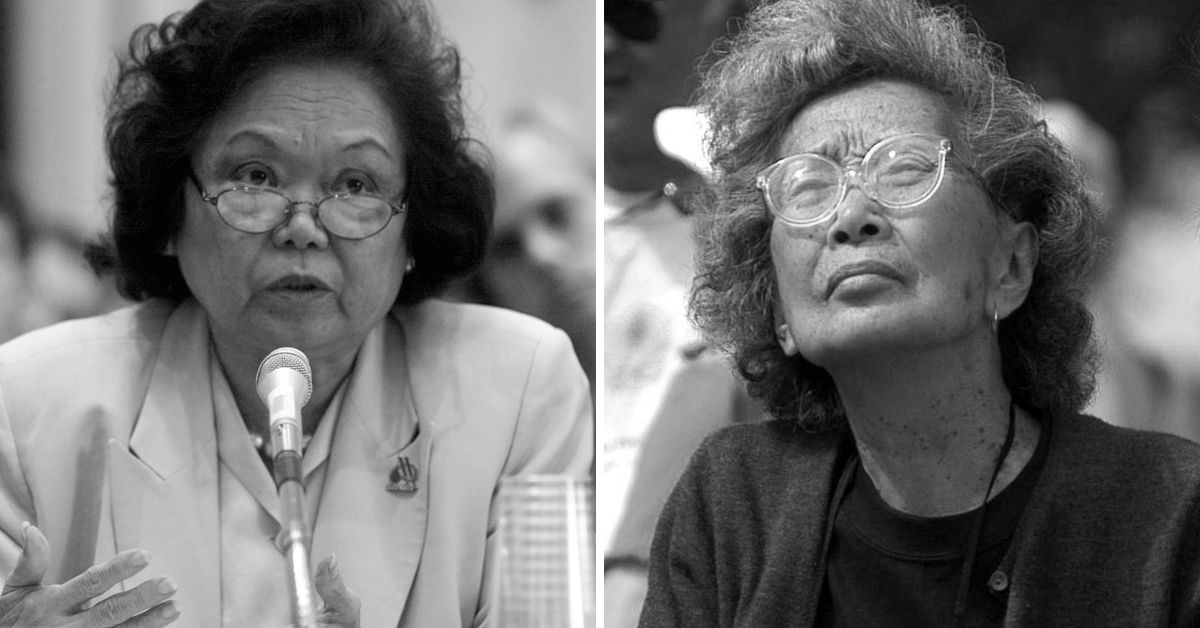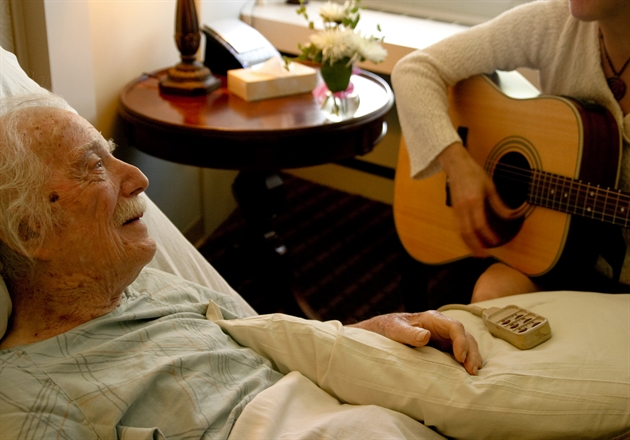AI in photojournalism is transforming the landscape of visual storytelling, offering both significant challenges and innovative solutions. As technology evolves, the impact of AI on photography becomes increasingly profound, raising concerns about authenticity and trust. Yet, prominent figures like Kira Pollack are pioneering efforts to utilize AI for the preservation of photographic archives, safeguarding invaluable records of history. This dual-edged sword not only highlights the potential of AI to streamline the categorization of images but also emphasizes the need to maintain the integrity of the visual narrative. As photojournalists navigate this uncharted territory, integrating AI could become essential for protecting and enhancing the legacy of visual documentation.
The integration of artificial intelligence in the realm of visual journalism marks a pivotal moment for image creators and storytellers alike. With advancements in technology, the domain of photography is grappling with the transformative effects of AI, which can both challenge traditional methods and provide new avenues for creativity. From enhancing photographic archival systems to ensuring the responsible organization of historic visuals, the dialogue surrounding AI and its role in preserving the essence of photojournalism is more relevant than ever. Kira Pollack’s endeavors exemplify the creative partnerships that are forming as professionals seek to harness AI for ethical purposes. The conversation about intelligent tools and their implications for visual storytelling is burgeoning, exploring the balance between innovation and the preservation of artistic integrity.
The Role of AI in Photojournalism’s Evolution
Artificial Intelligence (AI) is rapidly reshaping many industries, and photojournalism is no exception. As Kira Pollack points out, the introduction of AI technology has created both challenges and opportunities in the field of photography. While AI poses threats such as copyright infringement and the creation of synthetic images, it may also provide innovative solutions for preserving photojournalism’s rich history. This duality highlights the need for photojournalists to adapt, engaging with AI as a tool to safeguard their archives and the authenticity of visual storytelling.
The impact of AI on photography can be profound, with the potential to enhance visual storytelling. By employing AI’s capabilities, photojournalists can better catalog and contextualize their archives, ensuring that treasured images are not lost to time. For instance, using AI for image analysis and organization can help streamline the process of accessing vital historical visuals, which is especially crucial given that many iconic photographs risk being forgotten. As the industry evolves, embracing AI could encourage a renaissance in photojournalistic practices, blending technology with the art of storytelling.
Preserving Photojournalism Archives Through Technology
The preservation of photojournalism archives is a pressing concern, as the fragility of these collections increases with the rapid development of digital technologies. Pollack emphasizes the importance of treating archives as living entities that embody our visual history, rather than merely dusty collections of old images. By utilizing AI, photojournalists can safeguard their work against the ravages of time, providing new access and insights into historical contexts. The focus on preserving these archives is vital, especially as many defining images of our era remain underutilized and unidentified.
Innovative projects underway, such as Pollack’s partnerships with engineers and fellow photojournalists, highlight how AI can be harnessed to breathe new life into photo archives. By moving beyond standard cataloging methods, AI can aid in the nuanced understanding of complex images, thus revitalizing the value these visuals hold. This process not only enriches the storytelling potential of photojournalism but also ensures that important narratives—both personal and historical—are not lost to future generations. AI serves as a vital ally in preserving the diversity and richness of visual records.
Kira Pollack’s Vision for Ethical AI Usage
Kira Pollack’s work at the Shorenstein Center exemplifies a thoughtful approach to integrating AI within the landscape of photography and journalism. Her discussions delve into the ethical implications of employing AI technology in a realm where trust and authenticity are paramount. By focusing on using AI to preserve rather than distort, Pollack champions a vision where technology can be aligned with the core values of photography—truth and authorship. This perspective is crucial as the field navigates the complexities introduced by generative AI and synthetic media.
In her research, Pollack not only evaluates the capabilities of AI but also addresses the inherent risks of eroding trust in visual media. The fine line between employing AI to enhance photojournalism and addressing potential misuse is a theme that resonates throughout her work. She aims for AI tools to serve as a means to fortify the integrity of photojournalism, rather than compromise it. Thus, Pollack’s mission is not just to keep pace with technological advancements, but to guide them responsibly within the sphere of journalism.
Challenges and Opportunities for Photojournalists in the AI Era
The rise of AI technology has presented both challenges and opportunities for photojournalists. While concerns regarding copyright infringement and authenticity erode trust, the same technology can offer solutions to preserve and organize extensive archives. Mainstream AI tools can analyze and contextualize images, providing insights that would otherwise remain hidden. This new capability allows photojournalists to ensure their work contributes to a comprehensive historical narrative, fostering a more informed public.
Navigating these waters requires a nuanced understanding of both the benefits and limitations of AI. As Pollack notes, understanding how to use AI ethically is critical in the quest for preserving photojournalism. Rather than viewing AI simply as a threat, the profession must embrace it, looking for ways to leverage its potential. Strategies that prioritize authorship and protect the integrity of captured works will not only help maintain trust in visual media but may also redefine photojournalism in an age dominated by technological advancements.
The Future of Visual Storytelling amid AI Advancement
As advancements in AI continue to evolve, the landscape of visual storytelling is shifting dramatically. Kira Pollack envisions a future where AI can help elevate visual narratives, providing deeper connections and insights into the photographs we encounter. This technology’s ability to analyze and contextualize imagery opens up new avenues for audiences to engage with and understand visual stories. As public interest in authentic narratives rises, the integration of AI could serve as a bridge between technology and artistic expression.
Despite the challenges presented by AI in the realm of photojournalism—such as the risk of misinformation—there is a substantial opportunity to harness its capabilities for good. By focusing on ethical frameworks, photojournalists can cultivate a trusted environment where AI supplements rather than replaces the human touch in storytelling. The balance between innovation and ethical responsibility can foster a renaissance in visual storytelling, enriching the narratives shared with the world.
AI’s Potential to Transform Photojournalism Practices
The ongoing dialogue about AI and its potential impact on photojournalism signifies a crucial turning point in the practice. Pollack’s commitment to understanding the nuances of AI technology aligns with a growing awareness within the industry about the need to adapt. As AI tools become integral to photojournalism, they open doors for practitioners to redefine traditional approaches, integrating more data-driven methods into their work. This transformation can enhance the effectiveness of visual storytelling by allowing for more comprehensive analysis and richer narratives.
However, embracing this change requires a careful examination of the ethical implications associated with using AI in storytelling. The aim should be to create a symbiotic relationship between human creativity and artificial intelligence—one that respects the authenticity of photojournalism while embracing innovation. By finding this balance, photojournalists can ensure that their work remains relevant and resonant in an era marked by rapid technological advancements, thereby reinforcing the integrity and value of visual media.
Addressing Trust Issues in AI-Enhanced Photojournalism
The potential erosion of trust in visual media due to AI’s growing role cannot be overlooked. As Pollack points out, the proliferation of photorealistic synthetic images raises critical questions about the authenticity of visual storytelling. To combat these trust issues, it’s essential for photojournalists to establish clear guidelines around their work and the usage of AI, thereby reinforcing public confidence in their narratives. This proactive stance is crucial as society grapples with the implications of AI on perception and reality.
Engaging in these discussions helps galvanize the photography community around issues of authorship and ethical usage of AI technology. By advocating for transparency in the creation and distribution of visual content, photojournalists can foster a culture of accountability. Addressing these concerns head-on ensures that the legacy of photojournalism is upheld amid the ongoing digital transformation, allowing for a future where both creativity and truth coexist seamlessly.
The Interplay Between AI and Creative Expression in Photography
Photojournalism has long been a medium for creative expression, capturing the human experience through the lens of history. Kira Pollack recognizes that as AI technologies take center stage, understanding their role in this creative landscape is crucial. By harnessing AI to analyze and categorize images, photojournalists can enhance their creative potential, allowing for the surfacing of hidden narratives from archives that may have gone unnoticed. This blend of technology and creativity offers exciting possibilities for renewed visual storytelling.
Exploring how AI can deepen the engagement between audience and image is at the forefront of Pollack’s research. The interplay between human insight and AI analytics might lead to innovative ways of presenting stories that resonate more deeply with viewers. As the boundaries of creativity are tested in this new era, it becomes vital for photojournalists to experiment with these tools while maintaining their ethical commitments, crafting a future where technology serves to enrich, not replace, human expression.
Kira Pollack’s Call to Action for Future Generations
Pollack’s research and fellowship embody a call to action for emerging generations of photojournalists. Recognizing the urgency of preserving archival work before it erodes further, she emphasizes the need for a collaborative approach among technologists, ethicists, and image makers. By fostering interdisciplinary dialogue, new pathways can be carved out to navigate the complexities of AI’s impact on photography. This holistic engagement encourages the next wave of creators to be proactive in shaping how visual narratives are told in the future.
In seeking to not only address the challenges posed by technology but also embrace its potential, Pollack paves the way for a forward-thinking generation of photojournalists. This mission underscores the importance of maintaining the core values of journalism—truth, integrity, and memory—while harnessing the benefits that AI can bring. By championing responsible practices and innovative strategies, future photojournalists have the opportunity to redefine their craft, ensuring that the visual history of the world continues to be preserved.
Frequently Asked Questions
What is the impact of AI on photography and photojournalism?
AI significantly impacts photography and photojournalism by introducing advanced technologies that can enhance creativity while also posing existential risks. The ability of AI to generate photorealistic images without cameras can blur the line between real and fabricated images, raising concerns over trust and authenticity in visual storytelling.
How can AI help with the preservation of photojournalism archives?
AI offers innovative solutions for preserving photojournalism archives by automating the cataloging, organization, and analysis of vast collections of images. By using AI tools, photographers can ensure their work, which often goes unrecognized, is not only preserved but also made more accessible to future generations.
Who is Kira Pollack and what is her role in AI and photojournalism?
Kira Pollack is an Emmy award-winning visual storyteller and the Walter Shorenstein Media & Democracy Fellow at the Shorenstein Center. She is researching how to leverage AI to protect and preserve the archives of photojournalism, focusing on the narratives these archives contain and the need for ethical technology use.
What are the ethical considerations of using AI in photo archives?
When utilizing AI in photo archives, ethical considerations include safeguarding against unauthorized use of images, ensuring consent before training AI models on photographers’ work, and maintaining the integrity and context of the visual narratives. This approach prioritizes truth, authorship, and the preservation of the photographer’s legacy.
How does AI enhance visual storytelling in photojournalism?
AI enhances visual storytelling by providing nuanced analysis of images, identifying emotions, and generating context around photographs. By facilitating deeper engagement with the narratives behind the visuals, AI can help elevate the storytelling aspect of photojournalism, making it richer and more accessible.
What are the potential risks of AI in photography?
The potential risks of AI in photography include copyright violations, erosion of trust due to the creation of synthetic images, and the risk of misrepresentation of visual realities. It is crucial to address these issues to ensure that AI serves to support rather than undermine the authenticity of photojournalism.
How can AI assist in combating disinformation in photojournalism?
AI can assist in combating disinformation in photojournalism by providing tools to verify the authenticity of images and tagging sources accurately. By ensuring that archives remain accessible and credible, AI can help uphold journalistic integrity and trust among audiences.
What is the vision for the future of AI and photojournalism?
The vision for the future of AI and photojournalism revolves around using technology not only to preserve archives but also to enhance the craft’s ethical frameworks. By focusing on truth, context, and the protection of photographers’ rights, the integration of AI can help photographers adapt to challenges while reinforcing the core values of the profession.
| Key Points | Details |
|---|---|
| AI’s Dual Role in Photojournalism | While AI poses a threat to photojournalism by blurring the line of reality, it also offers potential solutions for preserving its integrity. |
| The Current Challenge | Many archives of photojournalism risk being lost due to neglect and the advancement of AI that complicates ownership rights. |
| Kira Pollack’s Initiatives | As a Shorenstein fellow, Pollack aims to utilize AI to safeguard and enhance the discoverability of photojournalism archives. |
| Experiments Conducted | Pollack’s team conducted case studies on conflict photography to evaluate AI’s ability to analyze and contextualize visual narratives. |
| Ethics in AI Usage | There are ongoing discussions about using AI ethically to preserve photojournalism while mitigating trust erosion associated with synthetic images. |
| Vision for the Future | Pollack aims to bridge the conversation between technology and journalism, emphasizing the need for integrity in visual storytelling. |
Summary
AI in photojournalism represents both a significant challenge and an unprecedented opportunity for the industry. As Kira Pollack highlights, while artificial intelligence can threaten trust by fabricating images, it can also be a vital tool for preserving the visual history documented by photojournalists. By exploring how AI can ethically catalog and reveal the richness of photojournalism archives, Pollack advocates for a future where the integrity of truth, authorship, and memory is maintained. With the right approaches, AI has the potential to reinforce the core values of photojournalism, ensuring that the stories captured through the lens continue to be seen and valued.




